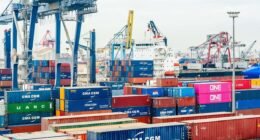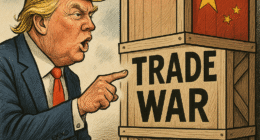As the world watches the lead-up to the U.S. presidential elections, former President Donald Trump’s proposed economic policies are once again stirring debate—particularly his renewed push for aggressive tariffs on imports. While Trump frames these tariffs as a strategy to protect American industries and reduce trade imbalances, many economists warn that such measures could escalate global economic uncertainty at a critical time.
The Return of the Tariff Era?
Donald Trump’s plan includes imposing a universal 10% tariff on all imported goods and a 60% or higher tariff on Chinese imports. These proposals signal a return to protectionist trade policies that defined much of his first term. While supporters argue that these tariffs will help revive domestic manufacturing, reduce dependence on China, and create American jobs, critics believe the long-term consequences could be damaging—both for the U.S. and the global economy.
Impact on Global Trade
Global trade thrives on stability and predictable rules. Trump’s proposed tariff hikes threaten to unravel the delicate fabric of international trade agreements. If enacted, these tariffs could trigger retaliatory measures from trade partners like China, the European Union, Mexico, and Canada—leading to a new era of trade wars.
Increased tariffs also raise the cost of goods, disrupting global supply chains and forcing companies to reevaluate their sourcing and production strategies. Many multinational businesses, already facing high inflation, would pass these costs on to consumers—potentially worsening the cost-of-living crisis worldwide.
Market Volatility and Investor Confidence
Markets dislike uncertainty, and Trump’s tariff announcements have historically sparked volatility in equities, currencies, and commodity prices. Renewed tariffs could lead to currency devaluations, particularly in export-heavy economies, and provoke capital flight from emerging markets. Such instability could undermine the fragile post-pandemic recovery many economies are still navigating.
Inflation and Consumer Impact
One of the biggest risks of broad tariffs is inflation. Import duties act as a tax on consumers, raising the price of everyday goods—from electronics to automobiles to groceries. At a time when central banks are struggling to control inflation, new trade barriers could undo hard-won progress and force interest rates to remain higher for longer.
Shift in Global Alliances and Trade Blocs
Trump’s tariff-centric policies may also push U.S. allies to deepen trade ties elsewhere, especially with China and the European Union taking steps to shield themselves from American protectionism. As countries look for alternatives to U.S.-centric trade, it could lead to the realignment of global trade blocs, weakening America’s leadership in the international economic system.
Conclusion
While Trump’s tariffs may be rooted in a desire to strengthen the U.S. economy, they carry the risk of increased global economic fragmentation, higher inflation, disrupted trade flows, and weakened investor confidence. In a world still healing from the shocks of the COVID-19 pandemic, war in Europe, and volatile energy markets, the return of aggressive trade wars could tip the scales toward deeper uncertainty.
Whether or not Trump returns to office, his tariff proposals are already influencing market expectations and global economic strategies. The storm is not just coming—it may already be forming on the horizon.













